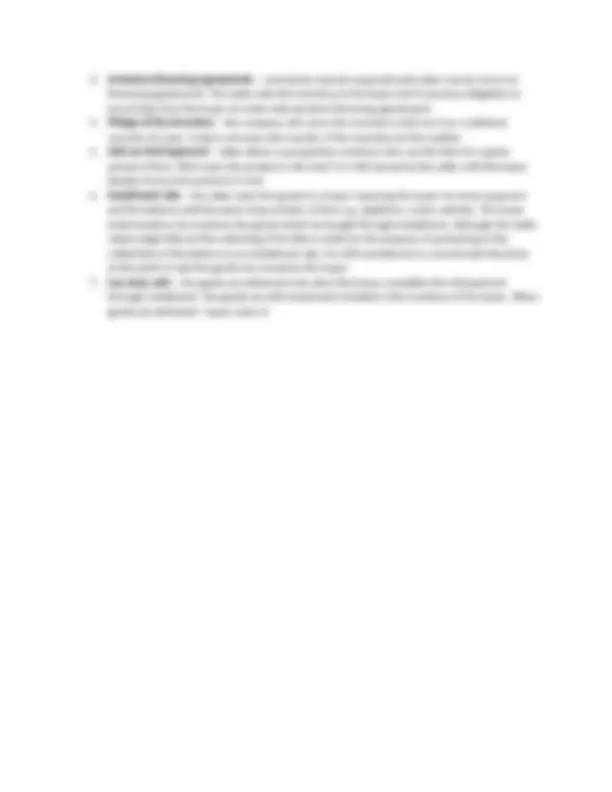



Study with the several resources on Docsity

Earn points by helping other students or get them with a premium plan


Prepare for your exams
Study with the several resources on Docsity

Earn points to download
Earn points by helping other students or get them with a premium plan
Community
Ask the community for help and clear up your study doubts
Discover the best universities in your country according to Docsity users
Free resources
Download our free guides on studying techniques, anxiety management strategies, and thesis advice from Docsity tutors
Intermediate Accounting 1 solution and step by step answer to Chapter 10, Inventories.
Typology: Quizzes
1 / 2

This page cannot be seen from the preview
Don't miss anything!


A company should record purchases when it obtains legal title to the goods. SPECIAL CONSIDERATION:
1. Goods in transit - What do we do with purchases that remains in transit or not yet received at the end of a fiscal/acctg period. *FOB shipping point – ownership of the goods is transferred upon shipment of the goods. If the good is still in transit, it is own by the buyer. *vs. FOB destination – it is when the good is received by the buyer that the ownership of the goods is transferred from the seller to the buyer. :. When the goods are purchase and still in transit at the end of the period and the shipping term is FOB destination, then the goods in transit is still owned by the seller and the seller should record the goods in transit as part of its inventory. a. Freight collect – charges on the goods shipped, is not yet paid. The courier shall collect the shipping cost from the buyer. The freight charge is paid by the buyer. b. Freight prepaid - the freight charges for the goods shipped is already paid by the seller. c. FAS ( free alongside) – the buyer pays for the cost of loading and shipment therefore the title of the goods is pass to the buyer. When the carrier takes position of the goods d. Ex ship – the seller bears all the expenses and risk of lost until the goods are unloaded and deliver to the buyer. e. CIF (cost, insurance, and freight) – the buyer agrees to pay in a lump sum the cost of the goods, insurance and freight charge. The ownership of the good is passed to the buyer upon delivery of the goods to the carrier. f. CF (cost and freight) - the buyer agrees only to pay the cost of the goods and the freight. Another special consideration in determining the physical goods to be included in the inventory, are consigned goods, so who owns the consigned goods?